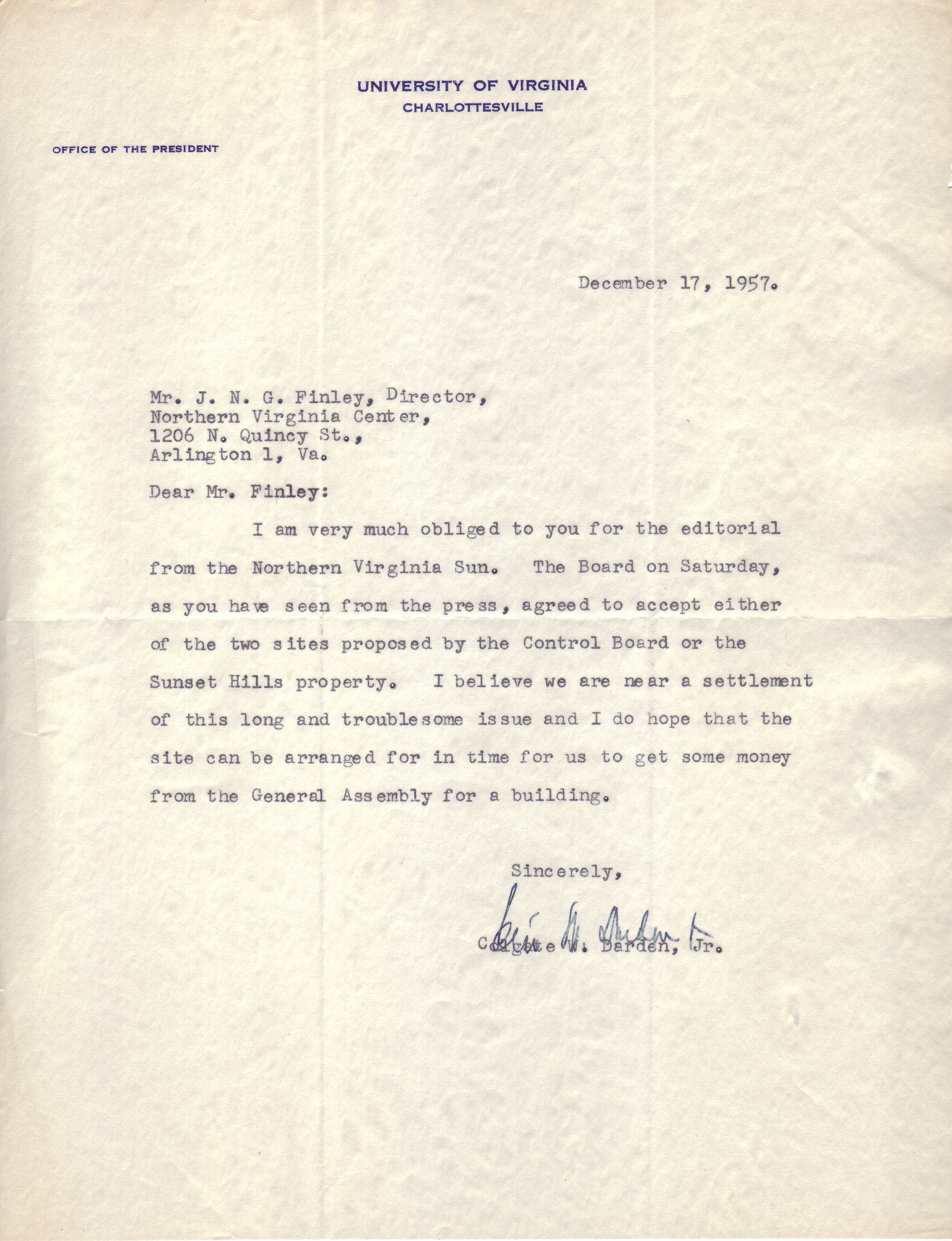1954-1958: Terra Incognita
In 1956, after the passage of Virginia House of Delegates Joint Resolution 5 giving the University the authority to open a branch in Northern Virginia, the search for a permanent location for the branch was officially underway. It would span more than two years and be quite difficult for groups representing both Northern Virginia and the University. C. Harrison Mann, Jr. wrote that this period was a chapter that “everyone would prefer not be written. The events to be detailed were very discouraging and depressing, yet ... cannot be avoided if the history of how the site, essential to the personality of the institution now occupied by George Mason University, came to be chosen.” [1]
The process of selecting a permanent site for the new branch would be highly political and would include every level of Virginia government, from local city councils and appointed boards up to the Governor, himself. At one point it even looked as if the plans for a Northern Virginia branch college might be pushed aside altogether, as appointed groups representing the University of Virginia’s Board of Visitors and Northern Virginia could not agree upon a permanent location. Each side considered the proximity of land to the more populous part of the Northern Virginia region the main issue in the site selection process, but for differing reasons. The University of Virginia Board of Visitors hoped to keep the branch further away from the center of Northern Virginia, while the Northern Virginia group wished to locate it closer to home. To them, the extreme western part of the area might as well have been uncharted territory.
C. Harrison Mann, Jr.’s unpublished manuscript is one of the very few first-hand accounts of the struggle to acquire a permanent site for the branch college. Having been an alumnus of the University of Virginia, a Northern Virginia lawyer, a member of the House of Delegates representing Arlington, and a leader on three advisory councils assisting the University in creating a presence in Northern Virginia, Mann was exceptionally suited to write this story. During the site selection period he found himself on the front lines battling for the people of Northern Virginia, sometimes against representatives of his beloved alma mater, some of whom with which he shared a friendship.
In the end, and arguably at the last minute, a compromise was struck with the help of the Town of Fairfax. Without the initiative of Fairfax Mayor, John C. Wood and the members of the Fairfax Town Council, George Mason College, might have been located in a more remote location. Consequently, its development might have been on a much smaller pace and scale. And, quite possibly, the University of Virginia might have decided to pull the plug altogether on the branch college, leaving Northern Virginia with no institution of higher education at all after eight years of hard work.
Terra Incognita: Sectionalism | The Search | Ravensworth vs. Sunset Hills | The Governor Intercedes | Farr Tract Revisited








